Fungi are known for thriving in some of the most unexpected places, adapting to environments that range from forest floors to decaying wood and even the frozen landscapes of winter. These resilient organisms play a vital role in their ecosystems by breaking down organic material, spreading spores, and forming symbiotic relationships with plants and animals. While some are well-known, many species go unnoticed as they flourish in specific, often hidden locations. This article explores hardy fungi that thrive in unusual habitats, revealing the unique adaptations that help them survive and the ecological benefits they provide.
Darwin’s Fungus (Cyttaria darwinii)

Darwin’s Fungus, found in the remote southern beech forests of Chile and Argentina, attaches itself to Nothofagus trees in a fascinating parasitic relationship. Its striking yellow-orange fruiting bodies resemble small balls hanging from branches, giving it an almost alien appearance among the trees. This hardy fungus flourishes specifically within these temperate forests, relying heavily on the local trees and climate to survive. The galls formed on the branches of its host trees serve as both habitat and resource, showing the fungus’s deep ecological integration. Cyttaria darwinii has evolved to thrive in these unique forest ecosystems, displaying resilience to the often chilly, humid conditions. These adaptations allow it to cycle nutrients back into the ecosystem, contributing to forest health.
Starfish Stinkhorn (Aseroe rubra)
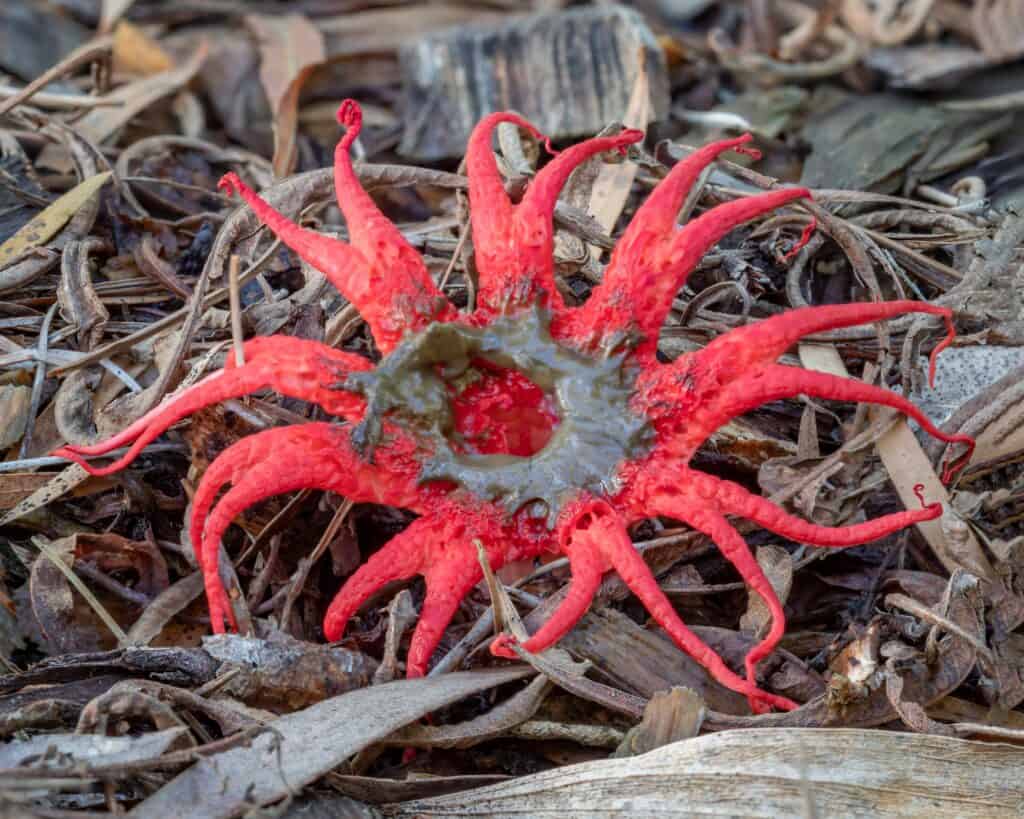
Known for its star-shaped, red arms and foul odor, the Starfish Stinkhorn can be found thriving in the moist soils of Australia and Southeast Asia. This eye-catching fungus emits a strong smell that attracts insects, which then disperse its spores to new locations. The scent and vibrant appearance combine to create an unmistakable presence in the forest, helping it flourish in damp areas with dense vegetation. It often grows in decayed plant material and mulch, showing a preference for nutrient-rich, shaded locations. By spreading its spores through insects, it has adapted to grow in secluded spots within tropical and subtropical forests. Its lifecycle depends on humid environments, where it can quickly release spores and expand.
Scaly Hedgehog (Sarcodon imbricatus)
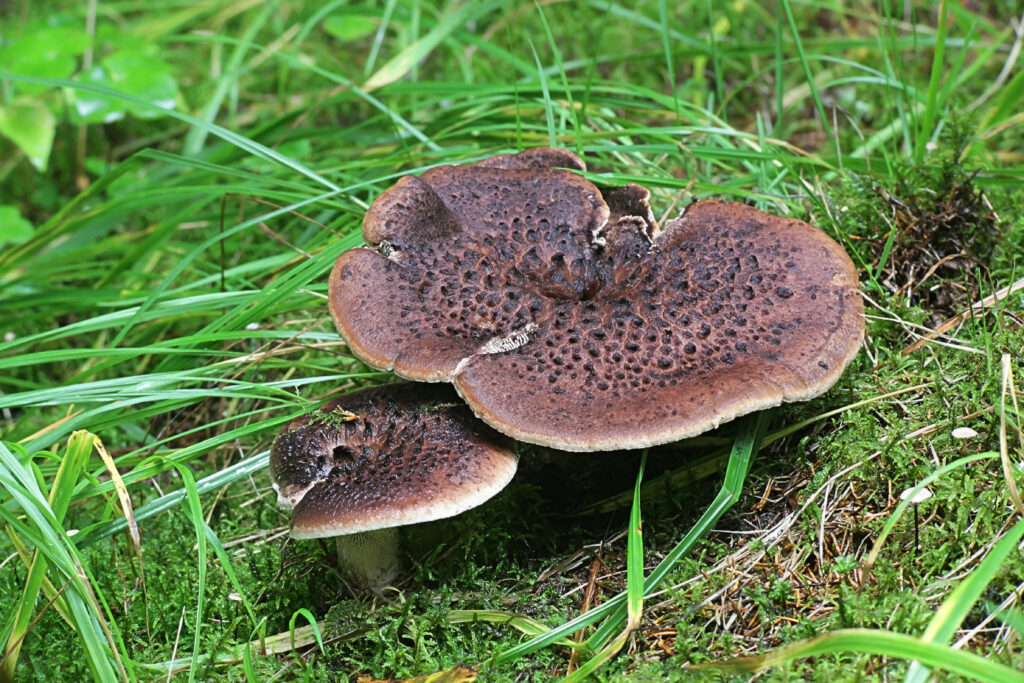
The Scaly Hedgehog, with its spiny cap and earthy colors, thrives in the dense, nutrient-poor soils of coniferous forests across Europe and North America. Its large, rugged fruiting body distinguishes it from other forest mushrooms and is found primarily in secluded forested regions. It forms symbiotic relationships with trees, aiding in nutrient absorption by breaking down organic material in the soil. Known as a mycorrhizal species, Sarcodon imbricatus connects with tree roots, fostering a cooperative exchange of nutrients. Its resilience in harsh forest soils allows it to flourish even in adverse conditions, maintaining its presence despite sparse nutrients. Its hardy structure enables it to survive in colder temperatures, where other fungi might struggle. It plays an essential role in forest ecosystems, supporting soil health and enriching the environment for other organisms.
Fly Agaric (Amanita muscaria)
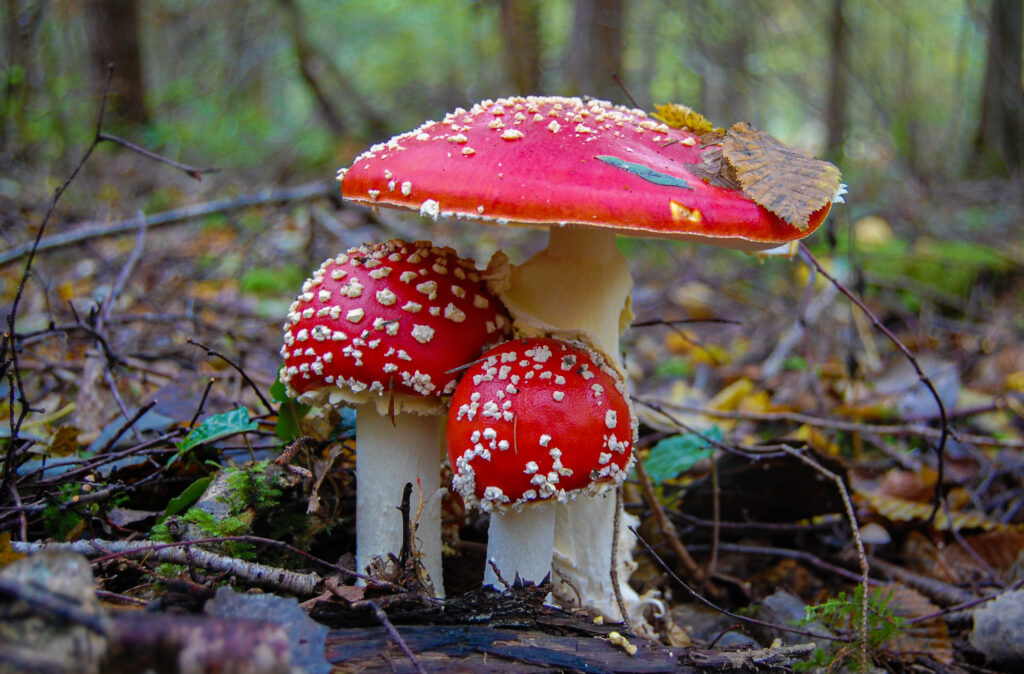
Fly Agaric, with its iconic red cap speckled with white spots, flourishes in temperate forests across the Northern Hemisphere, particularly under birch and pine trees. This colorful fungus forms mutualistic relationships with tree roots, assisting in nutrient absorption while benefiting from the trees’ support. Its bright colors serve as a warning for its toxic, hallucinogenic properties, allowing it to grow undisturbed in forested areas. Amanita muscaria survives best in cool, moist soil, where its underground network of mycelium interacts with the forest floor. The mushroom’s adaptations allow it to survive through winter, making it one of the hardiest forest fungi. As it decomposes organic matter, it also recycles nutrients back into the ecosystem. Despite its toxicity, it remains essential to its natural habitat, contributing to soil enrichment.
Common Earthball (Scleroderma citrinum)
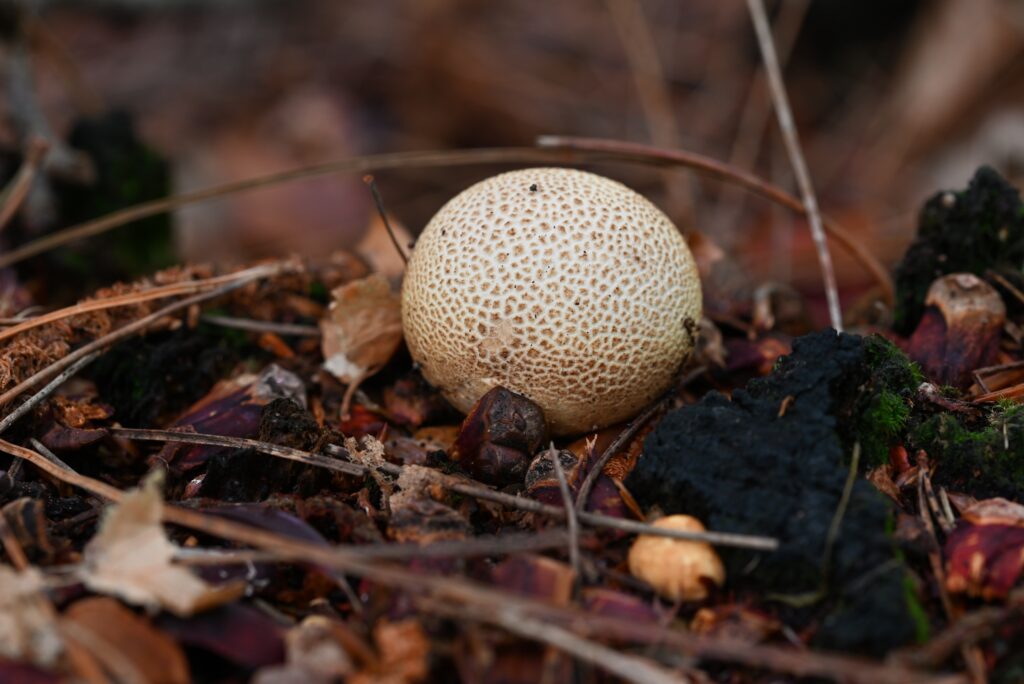
The Common Earthball, a tough fungus with a yellow-brown exterior, thrives in acidic, nutrient-poor soils across North America and Europe. Its thick, round fruiting body often cracks open to reveal a dark spore-filled interior, which can be toxic if ingested. Scleroderma citrinum is commonly found in pine forests and heathlands, adapting to grow in environments where other fungi struggle. This species decomposes organic material, cycling nutrients back into the soil to support surrounding plants. Its hardy structure and resistance to harsh conditions make it an essential contributor to forest health. By breaking down dead organic material, it helps improve soil quality and encourages plant growth.
Orange Peel Fungus (Aleuria aurantia)
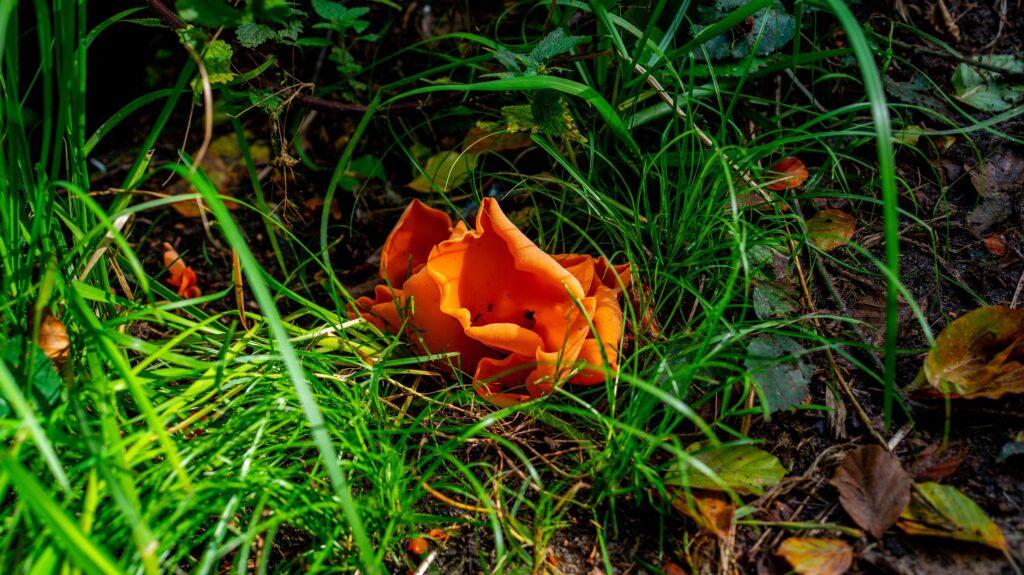
With its bright orange, cup-shaped appearance, the Orange Peel Fungus adds a splash of color to damp forest floors across North America and Europe. Growing primarily along forest paths and woodland edges, it thrives in nutrient-rich, moist soil, helping to decompose organic matter. Aleuria aurantia is saprotrophic, meaning it breaks down dead organic material, contributing to soil health and nutrient cycling. This unique fungus is easy to spot in shaded areas where sunlight filters through the trees, enhancing its vibrant color. It often appears after rain showers, flourishing in environments that maintain moisture and organic debris. The distinctive shape and color help it stand out, making it easily identifiable among forest plants.
Amethyst Deceiver (Laccaria amethystina)
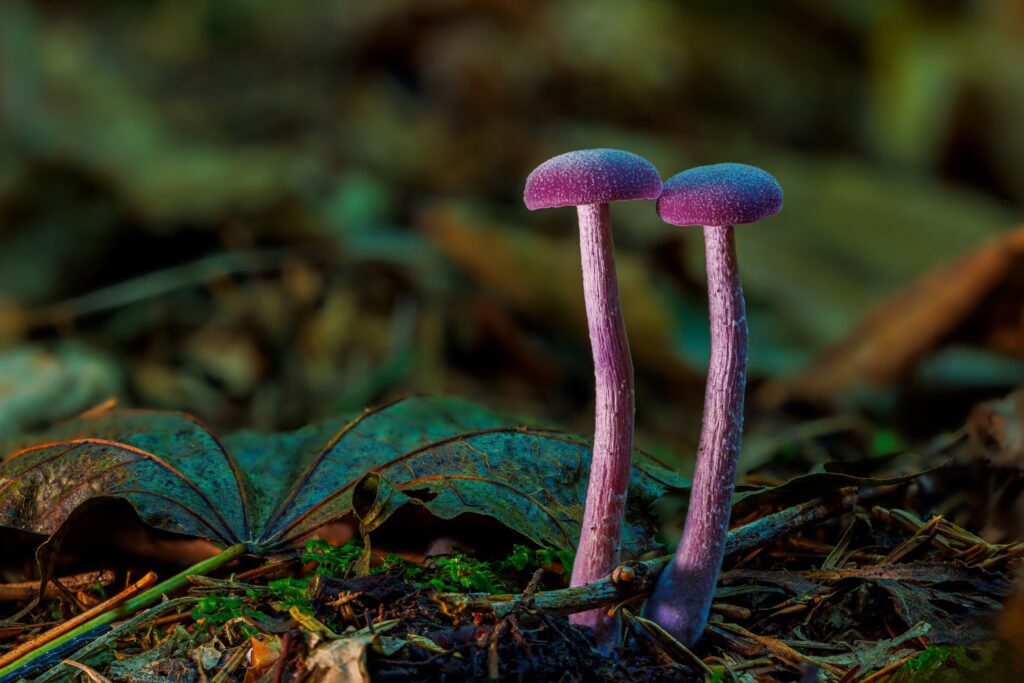
The Amethyst Deceiver, named for its striking purple color, thrives in nutrient-poor soils within deciduous and coniferous forests across Europe and North America. This vibrant fungus fades with age, deceiving observers into thinking it’s a different species over time. Laccaria amethystina forms symbiotic relationships with tree roots, supporting nutrient exchange and contributing to the health of forest vegetation. It adapts well to areas with sparse soil nutrients, showcasing its ability to survive under challenging conditions. The mushroom’s resilience allows it to flourish in both cold and warm seasons, making it a regular sight on the forest floor. Its symbiotic nature aids trees in absorbing essential nutrients, benefiting the forest’s overall ecosystem.
Devil’s Cigar (Chorioactis geaster)
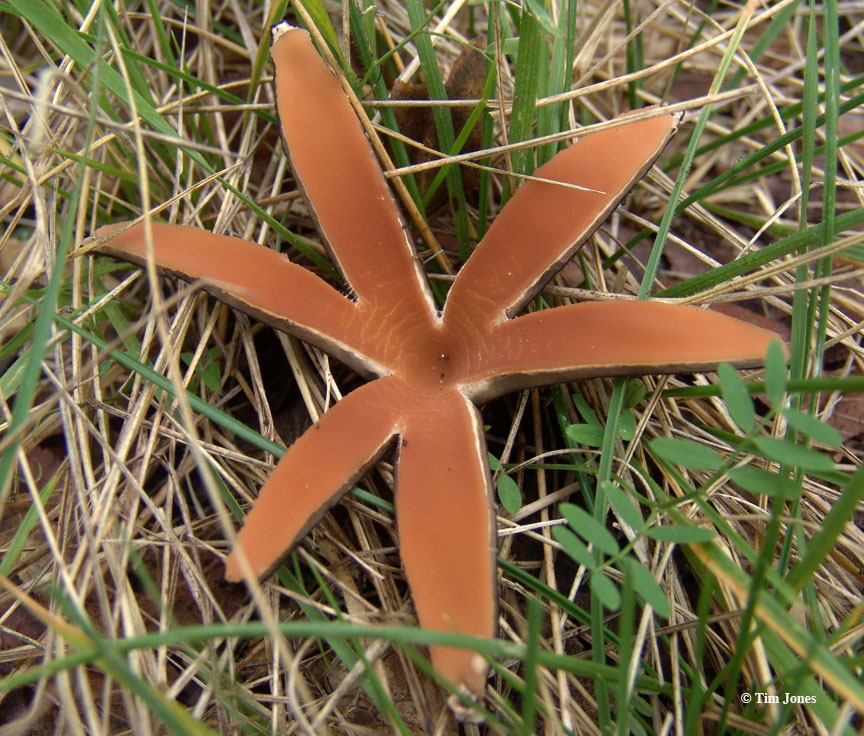
Native to Texas and Japan, the Devil’s Cigar flourishes in decaying wood on the forest floors of only a few select regions. This rare fungus appears cigar-like at first, eventually splitting open to reveal star-shaped arms that disperse spores into the air. It has adapted to grow on specific tree stumps, particularly those of cedar elms in Texas, showing an unusual resilience to dry, nutrient-poor conditions. Its preference for decomposing wood highlights its role as a decomposer in forest ecosystems. Its unique shape and rarity have earned it folklore status, contributing to local biodiversity in the forests where it grows. It thrives in regions with seasonal rains, allowing it to survive harsh conditions for extended periods.
Hair Ice (Exidiopsis effusa)
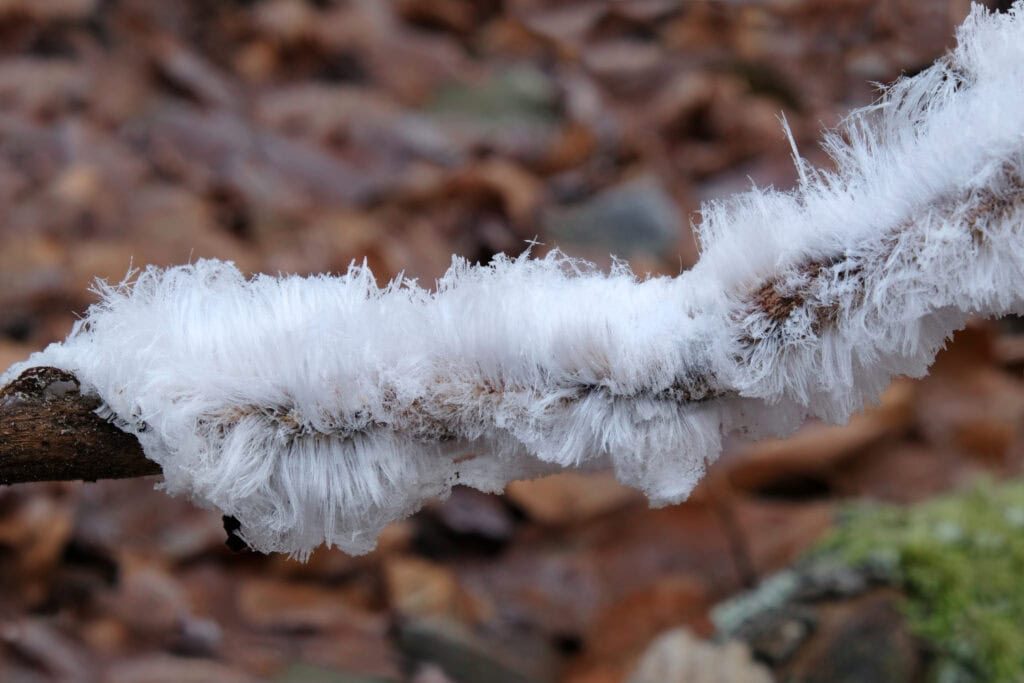
The phenomenon known as Hair Ice occurs when Exidiopsis effusa grows on decaying wood, forming delicate, hair-like ice filaments on winter nights. It releases moisture that freezes into thin strands, creating a transient yet captivating natural display in cold, humid forests. It thrives in these chilly environments, requiring specific conditions to produce its delicate ice formations. It decomposes the wood, releasing water that extrudes and freezes, producing a fine, hair-like texture. These ice filaments can grow up to 20 centimeters in length and last until temperatures rise. The intricate formations have puzzled scientists, drawing attention to its unique impact on its habitat. It showcases nature’s beauty and the unusual ways fungi interact with their environment.
Bird’s Nest Fungus (Nidulariaceae family)
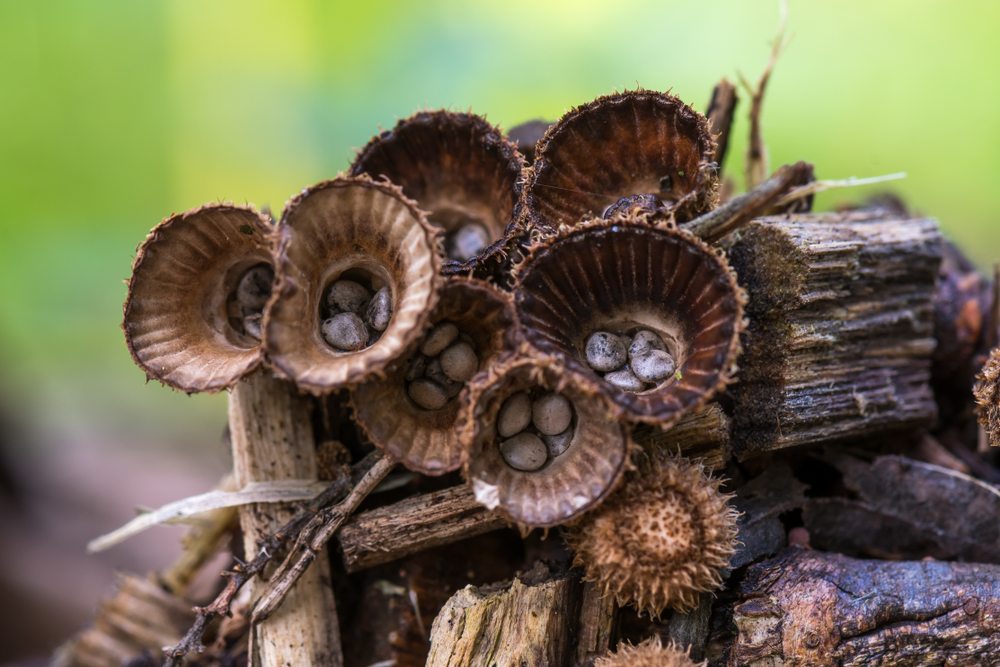
Resembling miniature bird nests, the Bird’s Nest Fungus thrives on decaying wood and plant material in forests and gardens. This tiny fungus forms cup-shaped structures that contain egg-like peridioles, which act as spore capsules. When raindrops hit these “nests,” the peridioles are splashed out, dispersing spores to new locations. This unique reproductive strategy allows them to flourish in damp, shaded environments, benefiting from seasonal rains. Its small size and camouflaged appearance make it a discreet but essential part of the forest floor. By decomposing plant matter, it contributes to nutrient recycling in soil ecosystems.
Dead Man’s Fingers (Xylaria polymorpha)
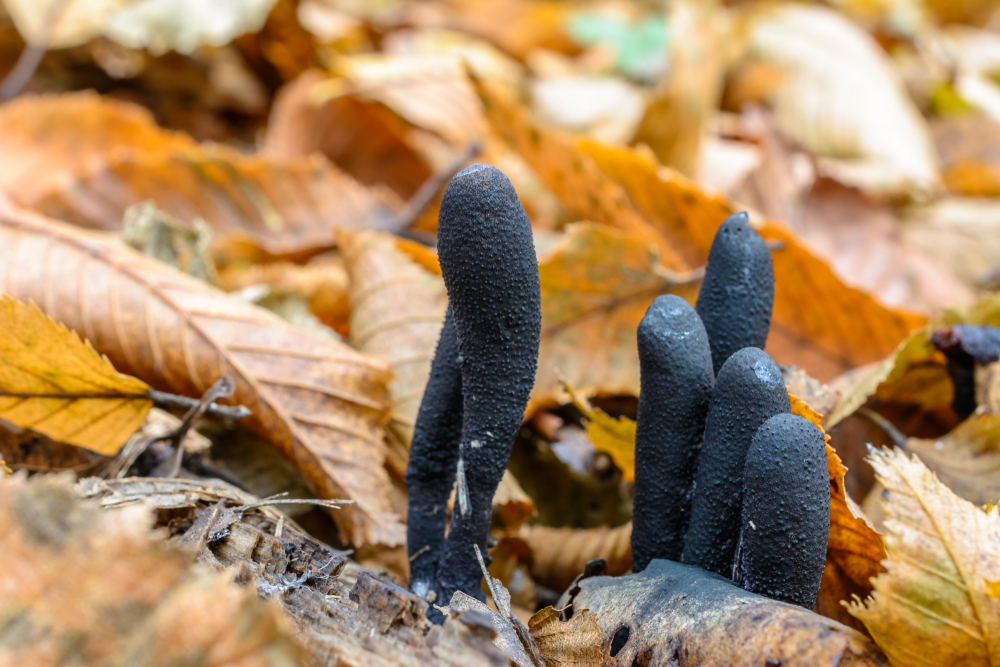
Dead Man’s Fingers grows on decaying wood, often creating an eerie, finger-like appearance that juts from the ground in dark shades of black and gray. It is commonly found in forests and woodlands across North America and Europe, particularly on decomposing hardwood stumps and fallen trees. It thrives in moist, shaded areas, contributing to the breakdown of organic material within forest ecosystems. Xylaria polymorpha serves an important ecological role as a decomposer, recycling nutrients back into the soil and promoting forest health. Its macabre look has inspired local folklore and superstitions, adding a layer of mystique to its presence in the woods. Unlike many fungi, it prefers cool, temperate climates, making it a common sight in seasonal forests. Its rugged, hardy structure allows it to persist through various weather conditions, adding to its resilience and longevity.
Cordyceps (Cordyceps militaris)
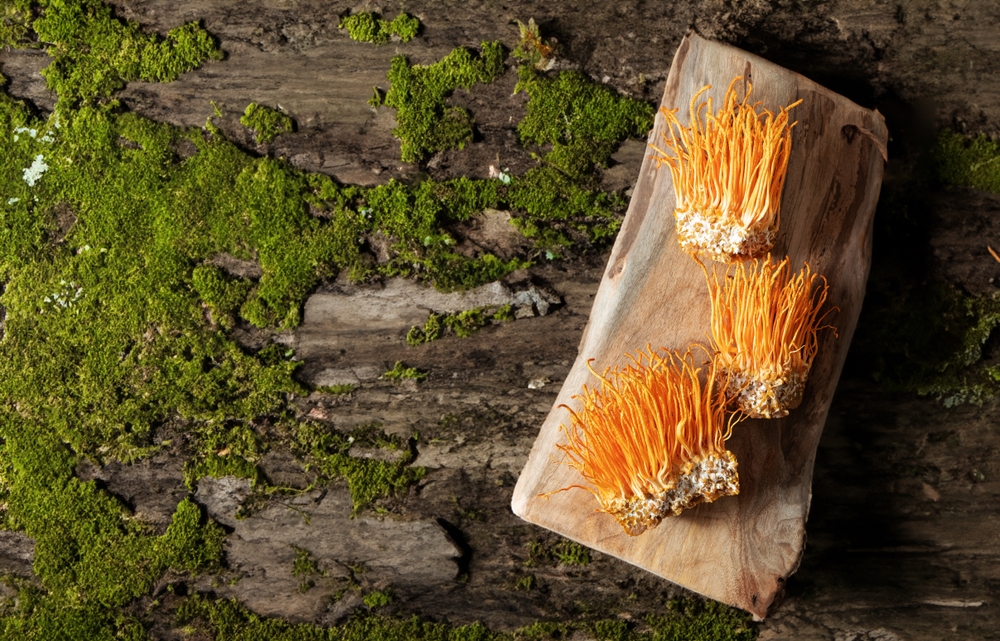
Cordyceps, particularly the species Cordyceps militaris, is a parasitic fungus known for infecting insects and other fungi, turning them into nutrient sources. It is commonly found in hidden, moist forest floors where it thrives on caterpillars and other small arthropods, often emerging as bright orange fruiting bodies from the host’s body. Its unusual life cycle allows it to flourish in nutrient-poor forest floors, surviving off the organic matter of its hosts. Traditionally used in herbal medicine, it is praised for purported health benefits such as boosting energy and immune functions, showing the broader role fungi can play in ecosystems and cultures. Its parasitic nature highlights the complex interactions within forest ecosystems, where even insects serve as micro-ecosystems. Its adaptability to moist, secluded forest areas makes it a fascinating and resilient species.
This article originally appeared on Rarest.org.
More from Rarest.org
19 Most Elusive Classic Motorcycles Ever Made

Classic motorcycles have an undeniable allure, and some of them remain the ultimate trophies for collectors. Their scarcity, groundbreaking engineering, and cultural significance make them highly sought after. Read More.
21 Magnificent Mammals with Unique Fur Patterns
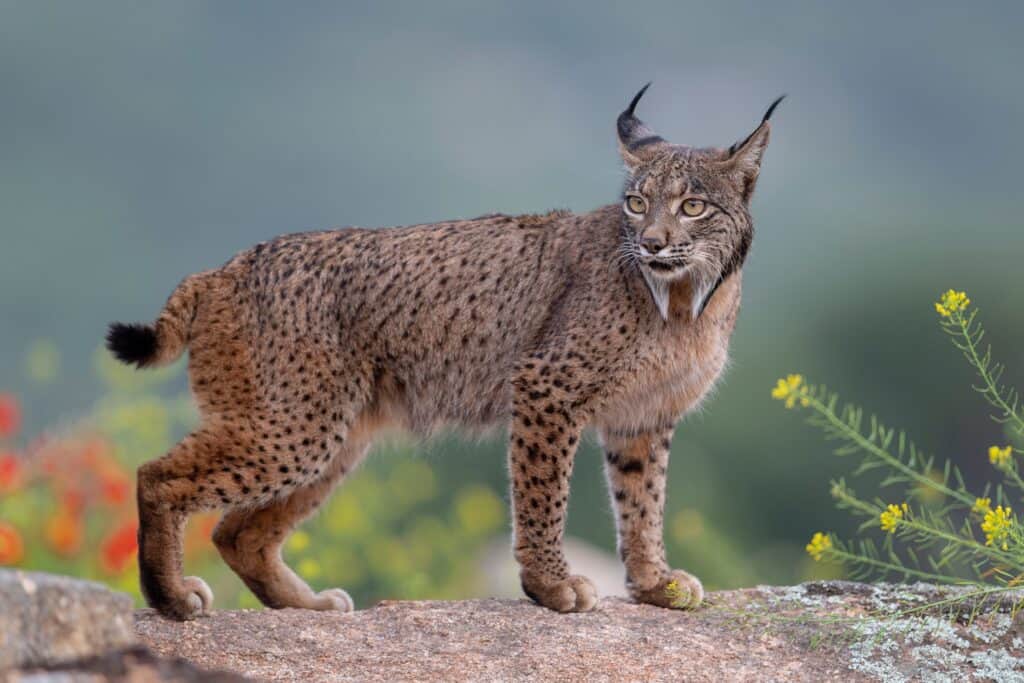
Nature’s creativity shines through the stunning fur patterns of certain mammals, making them stand out in their habitats. From stripes to spots, these unique designs help with camouflage, identity, and even temperature regulation. Read More.
22 Striking Reptiles with Unusual Color Patterns
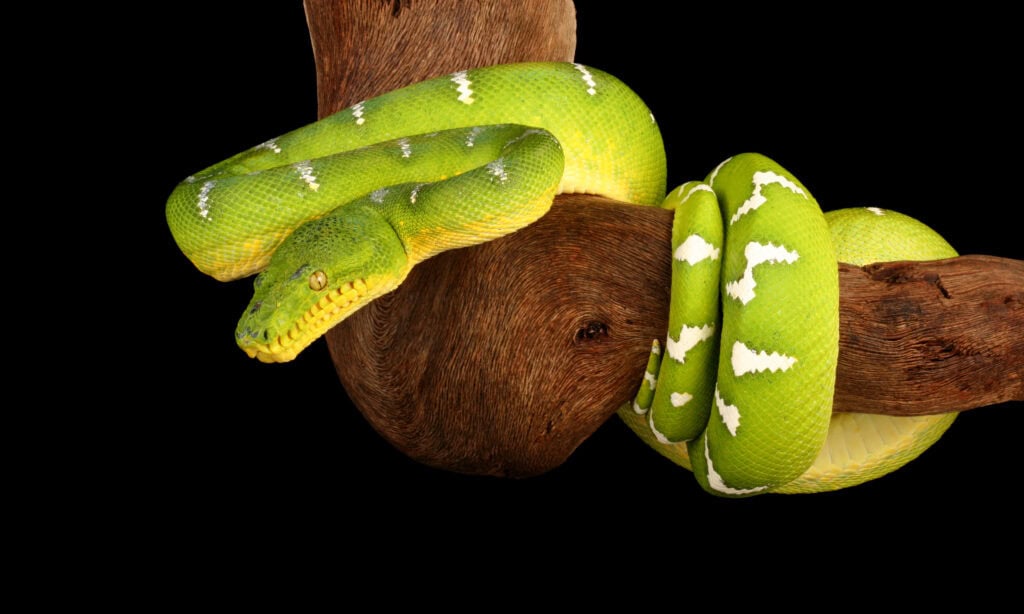
Reptiles are known for their impressive variety, and some species boast truly striking color patterns. Their coloration not only serves a purpose in camouflage or mating but also highlights the incredible diversity of the reptile world. Read More.
